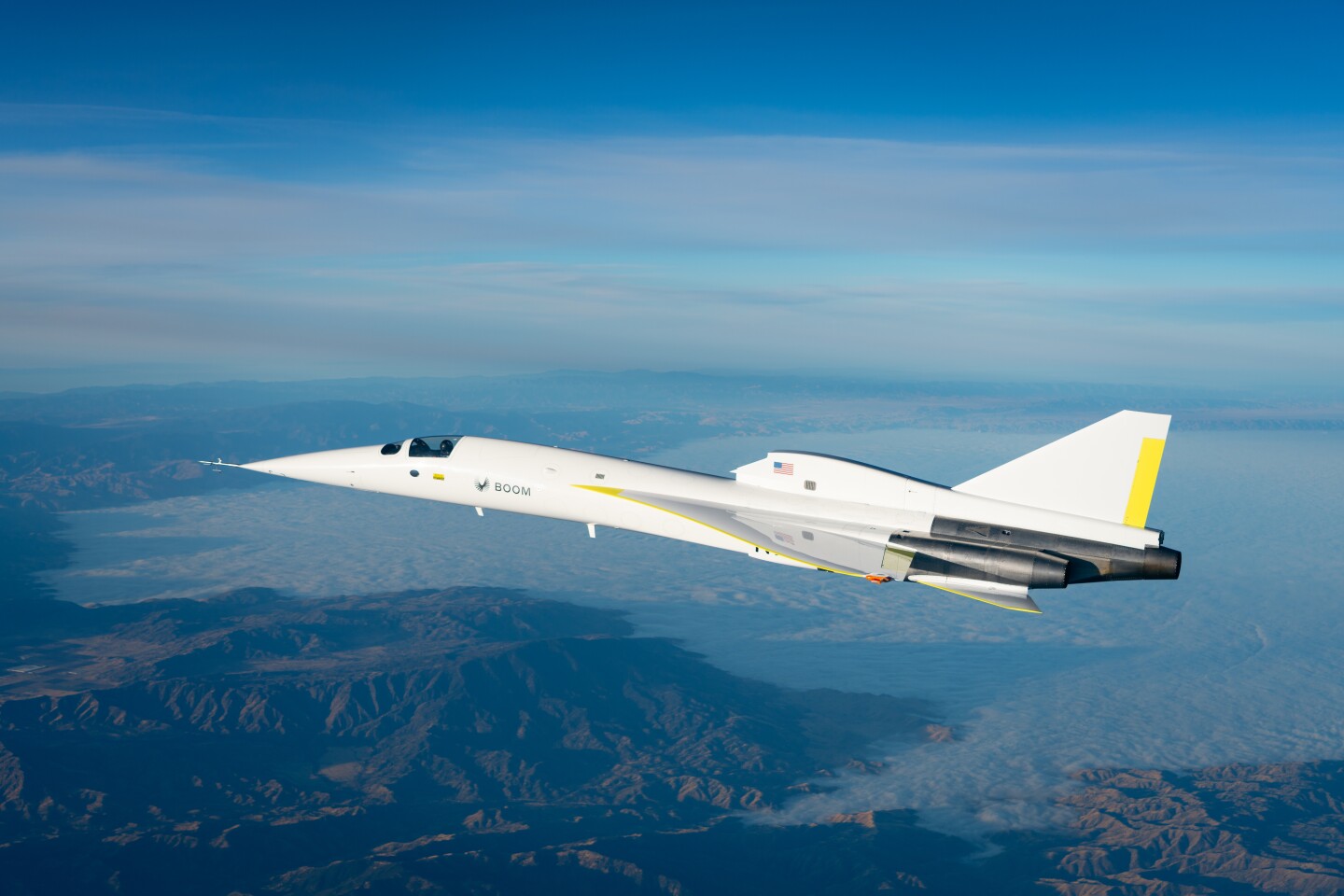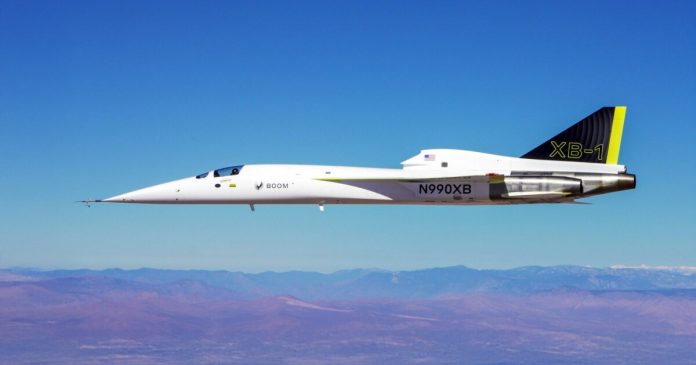If you’ve been keeping tabs on aviation news as of late, you saw that Boom Supersonic just recently broke the sound barrier with its XB-1 demonstrator aircraft. Oddly enough, no one on the ground heard a thing during its “boomless” cruise.
Supersonic flight has been all the rage since the mid-1970s when the Concorde was whisking commercial passengers across the pond at breakneck speeds upwards of Mach 2 (right around 1,354 mph or 2,180 km/h).
The trouble is, supersonic flight means sonic booms. And while they might sound pretty cool when you hear them at an airshow when your favorite USAF or Navy fighter plane does a flyby, the fact is that broken windows, scared pets and livestock, and other annoying or property-damaging things are less cool. The FAA put a screeching halt to civilian supersonic flight over land in 1973 before civilian supersonic flight even became a thing, limiting jets to subsonic speeds.
Boom Supersonic
This is where Boom quietly pops up on the radar. The fast-flying startup’s mission is to produce a commercial supersonic jet called Overture that can cut flight times across the US by 90 minutes, or flight times across the Atlantic by half.
Boom’s XB-1 demonstrator took its maiden flight in March of 2024. In October of 2024, the XB-1 was teasing supersonic speeds. And it was only about two weeks ago that the XB-1 broke the sound barrier for the very first time, reaching Mach 1.122 during its test flight over the Mojave Desert in California. No other independently developed jet has ever broken the sound barrier prior to the XB-1 … and the company did it with no audible sonic booms on the ground.

Boom Supersonic
The XB-1 went supersonic a total of three times during the test flight. An array of microphones were placed on the ground along the aircraft’s flight path to confirm that the signature “BOOM!” never made it to ground level.
“XB-1 broke the sound barrier three times during its first supersonic flight – without an audible boom,” said Blake Scholl, Boom Supersonic’s Founder and CEO. “This confirms what we’ve long believed: supersonic travel can be affordable, sustainable, and friendly to those onboard and on the ground.”
The science behind the silence
The XB-1 uses a purpose-built turbofan propulsion system that’s designed specifically for Overture, called Symphony. It’s a twin-spool, medium-bypass turbofan that doesn’t use an afterburner and can produce 35,000 lb (15,876 kg) of thrust at takeoff and sustain Mach 1.7.

Boom Supersonic
According to Boom’s website, “Unlike subsonic turbofans, this new propulsion system will include a Boom-designed axisymmetric supersonic intake, a variable-geometry low-noise exhaust nozzle, and a passively cooled high-pressure turbine.”
This design gives the XB-1 the ability to break the sound barrier when it’s above 30,000 ft (9,144 m), and that’s where the important bits in all of this come into play. Right around 30,000 ft is where changes in air density and temperature create a phenomenon known as Mach cutoff physics.
When an aircraft (or any object) exceeds the speed of sound known as Mach 1 – a speed that varies wildly depending on altitude, temperature, and air pressure: 767 mph (1,235 km/h) at sea level with nominal atmospheric conditions or as low as 660 mph (1,062 km/h) at 35,000 ft (10,668 m) – it generates a shockwave that travels outwards and downward … unless it’s above that ~30,000 ft “Mach cutoff boundary,” then the shockwave bounces upwards, dissipating into the atmosphere.
As early as the 1930s, aerodynamicists like Theodore von Kármán were already modeling theoretical shockwave propagation and how atmospheric conditions would affect sonic booms. When ‘ol Chuck Yeager took the X-1 faster than any human had ever gone as he broke the sound barrier in 1947, scientists got a good look at how sonic booms propagate. By the 1960s, people had a pretty solid handle on how altitude, temperature and wind layers would affect shockwave refraction.

Boom Supersonic




